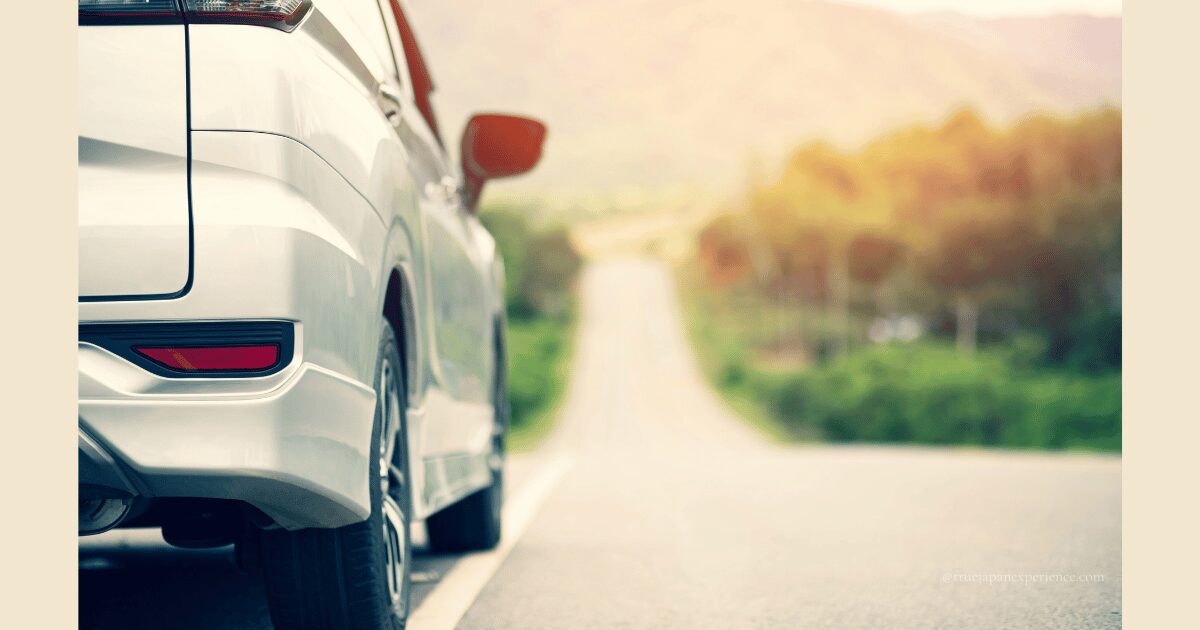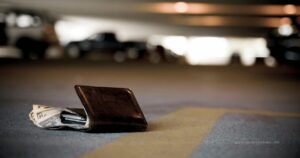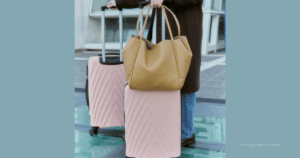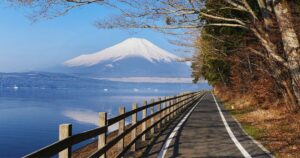Renting a car in Japan may sound convenient for your trip.
But for many foreign tourists, it’s a risky and stressful choice. From unfamiliar traffic rules to high accident rates, driving in Japan is not as easy as it seems.
Here’s why you should think twice before renting a car in Japan—and what to do instead.
Is It Safe to Rent a Car in Japan as a Tourist?
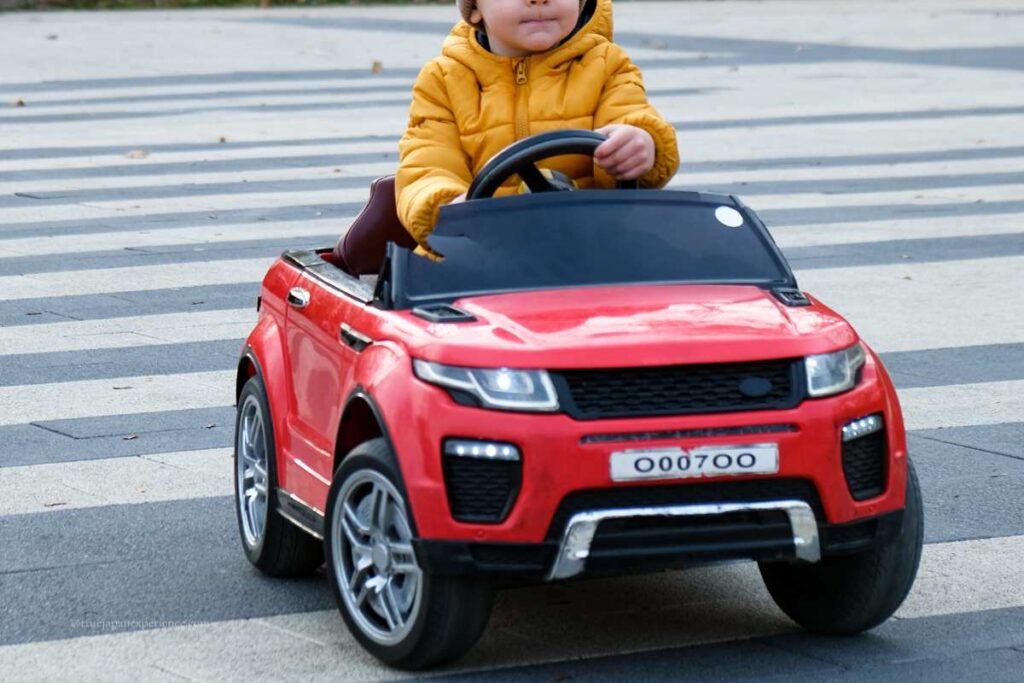
Is Renting a Car in Japan Safe for Tourists?
The short answer: not really.
Foreign visitors who rent cars in Japan are much more likely to cause serious accidents than locals.
The traffic accident rate among foreign tourists is 5.5 times higher than that of Japanese drivers. Even more alarming, the fatal accident rate is four times higher.
These aren’t just minor mistakes.
Many of these crashes have led to severe injuries and deaths—sometimes involving innocent locals.
Most of these accidents happen because tourists are unfamiliar with Japan’s unique traffic rules, narrow roads, and confusing road signs.
Why Foreign Tourists Often Cause Accidents When Driving in Japan
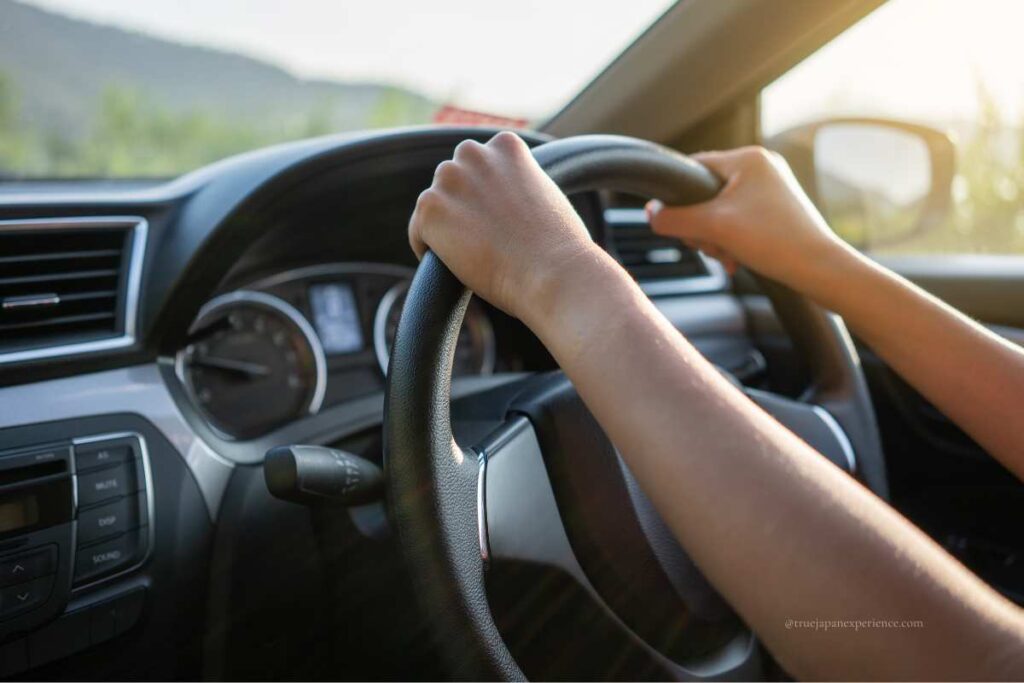
Japan’s roads may appear clean and modern, but they are not easy for tourists to drive on. Foreign visitors often underestimate how different the driving experience is in Japan.
They must adjust to left-side driving, understand unfamiliar traffic rules, read non-standard road signs, and sometimes deal with narrow or mountainous roads.
These challenges are very different from what most travelers are used to in their home countries.
Because of that, rental car accidents caused by tourists have become more and more common in recent years. These accidents are often the result of confusion, inexperience, or a lack of preparation.
In the next sections, we’ll look at the general reasons why foreign visitors are more likely to get into accidents when they rent a car in Japan.
Why Left-Side Driving in Japan Is Hard for Foreign Drivers
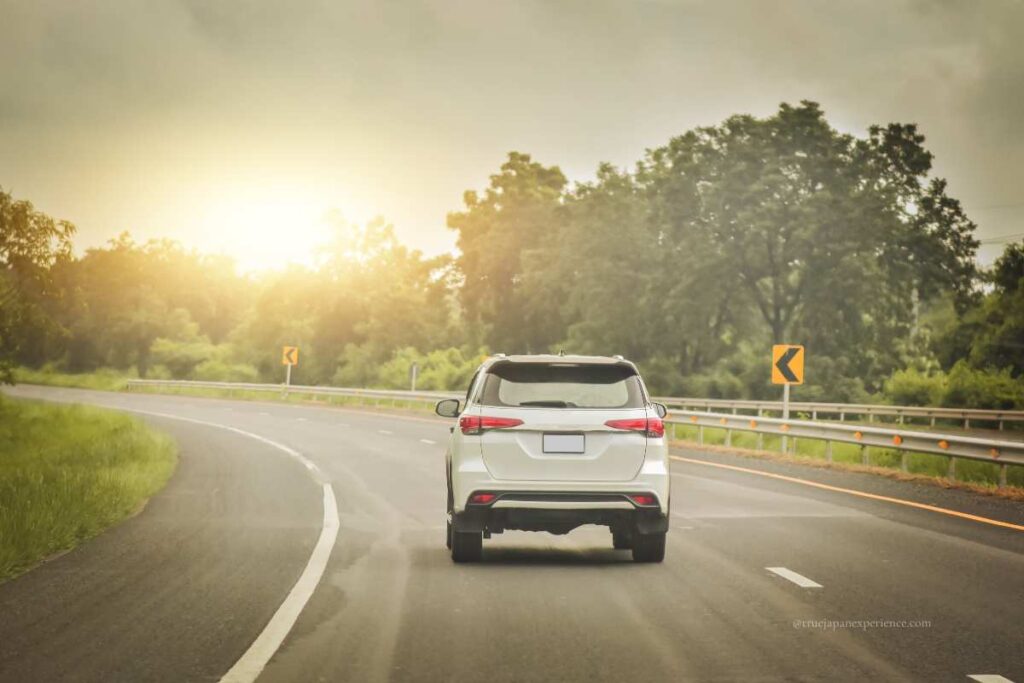
Japan is one of the few countries that follow left-side driving with right-hand steering. Only about one-fourth of the world’s countries drive this way.
Because of this, many foreign drivers feel confused or make mistakes when driving in Japan.
If you’re used to right-side driving (like in the U.S., France, Germany, Korea, or China), your brain needs time to adjust—and that can lead to mistakes:
For example, some tourists turn too sharply or too widely at corners.
They are used to turning from the right side, not the left. So when they try to turn in Japan, their sense of space is off. This can lead to hitting the curb or crossing into another lane.
Also, some people use the windshield wipers instead of the turn signals by accident.
That’s because in many foreign cars, the turn signal is on the left side of the steering wheel. But in Japanese cars, it’s on the right side. So drivers move the wrong lever by habit.
Another problem is choosing the correct lane in busy traffic.
Foreign visitors may not know which side is for passing, or may drive in the wrong lane by mistake. This is dangerous and can cause sudden swerves or even head-on crashes.
Driving on the opposite side is not just a small change. It affects everything—how you turn, how you check mirrors, and how you control the car. That’s why driving in Japan is much harder than many people think.
Traffic Rules in Japan Are Different—And Confusing
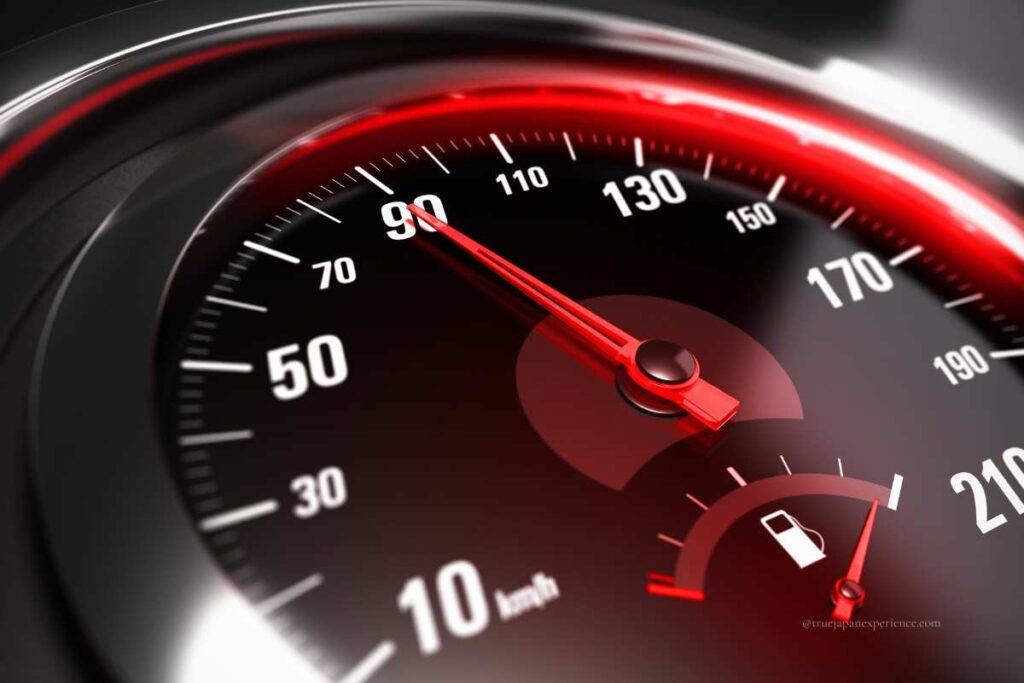
Japan has many traffic rules that are very different from other countries. These rules may seem simple, but for tourists, they often feel strange or hard to follow.
In Japan, pedestrians always have the right of way.
Drivers must stop whenever someone is about to cross the street—especially at crosswalks.
But in many other countries, cars often go first, even if people are trying to cross. That’s why some foreign drivers don’t stop, which can lead to dangerous situations or police tickets.
In Japan, honking the horn is not allowed unless it’s an emergency. In many countries, people use the horn to warn others or show frustration.
But in Japan, doing that can surprise or upset other drivers, and may even cause a fight.
Many tourists are also used to fast and aggressive driving. In some places, people cut in quickly or drive very close to the car in front.
But in Japan, drivers wait, give space, and take turns. Foreign drivers who don’t follow this style often cause accidents during lane changes or turns.
Japan also has lower speed limits. Most roads are 40–50 km/h, and highways are under 100 km/h.But in other countries, 60–70 km/h in cities and 120 km/h on highways is normal.
So tourists may drive too fast without noticing and get a ticket—or worse, cause an accident.
These rules are not hard to understand, but they feel very different from what many tourists are used to.
If drivers follow their home country habits, even small actions can lead to big problems in Japan.
Japanese Road Signs That Confuse Tourists Driving in Japan
Road signs in Japan are very different from the ones in many other countries.
Many signs are written only in Japanese, and the shapes or symbols are not international. This makes it hard for foreign drivers to understand them at a glance.
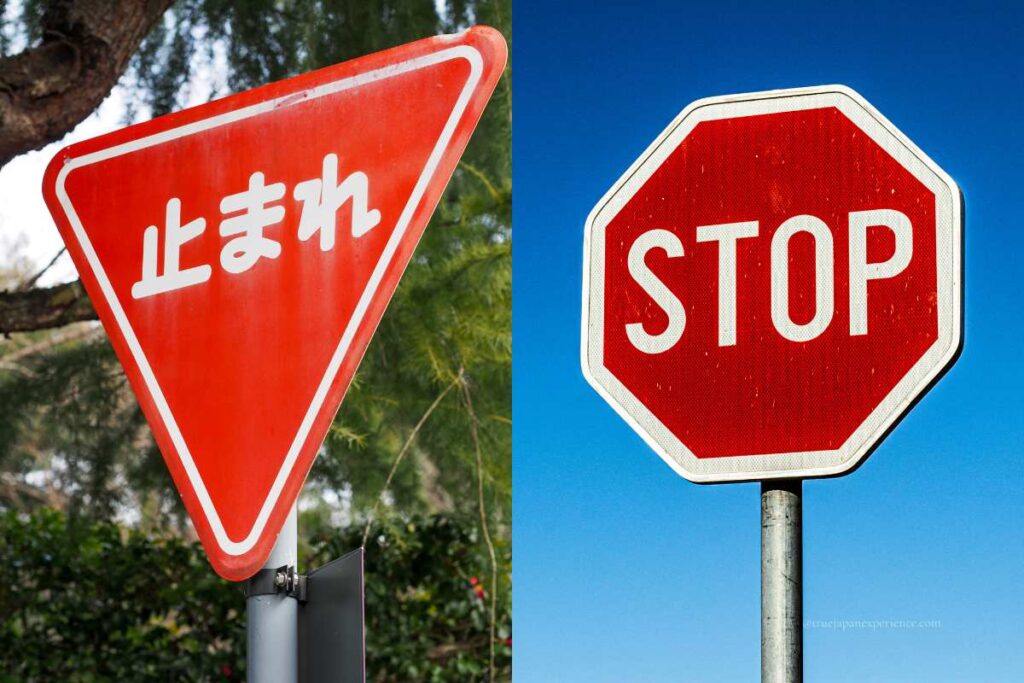
One common example is the stop sign.
In Japan, it is a red triangle that says “止まれ” in Japanese. But in most countries, the stop sign is a red octagon with the word STOP in big letters. Because the shape and text are both different, many tourists miss the sign and don’t stop.
Also, many signs in Japan use only Japanese words.
If you can’t read Japanese, it’s hard to know what the sign means. Even signs for “one-way” or “speed limit” may look unfamiliar, because the colors and styles are different from those in other countries.
According to one study, only 30% of American drivers could understand Japanese road signs correctly. That shows how hard it is—even for experienced drivers.
Because of all this, foreign tourists often miss signs, break rules, or cause accidents simply because they can’t understand the signs. This is not their fault—but it is a serious safety risk.
Narrow Roads, Steep Hills, and Snow: Why Japan’s Terrain Is Dangerous for Tourists

In Japan, many roads are very narrow.
This is because many towns and cities were built long ago—before cars existed.
Even today, some streets are still too small for two cars to pass each other. This isn’t just a problem in the countryside. Even in big cities, narrow roads are very common, especially in neighborhoods.
In many other countries, roads are wider and easier to drive on. But in Japan, first-time visitors are often shocked at how tight the roads are. When you’re not used to this, it’s easy to make mistakes.
Narrow roads often lead to small accidents, such as:
・Scraping the side of your car on walls or trees
・Getting too close to bicycles or people walking
・Misjudging the size of your car
・Getting stuck when two cars meet and one must back up
These problems are very common, especially for tourists using rental cars.

Outside the cities, things can get even harder.
Many famous shrines and temples in rural areas are located deep in the mountains. To reach them, you may need to drive on curvy, narrow, and sometimes unpaved roads. Some roads are only wide enough for one car, so drivers must slow down and take turns.
This can be very stressful for people who are not used to mountain driving, especially if they don’t fully understand Japanese road rules or signs.
Even worse, navigation apps like Google Maps sometimes suggest shortcut roads. But these shortcuts can be too narrow, too steep, or too difficult for tourists. Many visitors follow the GPS without knowing the risks—and get stuck or lost.
Winter makes everything more dangerous.
Tourists often rent cars to visit ski resorts in places like Hokkaido or Nagano. But many of them have never driven in snow before.
In some areas, almost half of the winter accidents involve foreign drivers. They often don’t understand how to drive on icy roads or how fast they should go.
Even Japanese people who live in areas without much snow will often avoid driving in winter. Unless they have special snow tires and experience, they stay home when the roads are icy. That’s why snow driving is not recommended for visitors—it’s just too risky.
Differences in Global Licensing Systems and the Ease of Driving in Japan
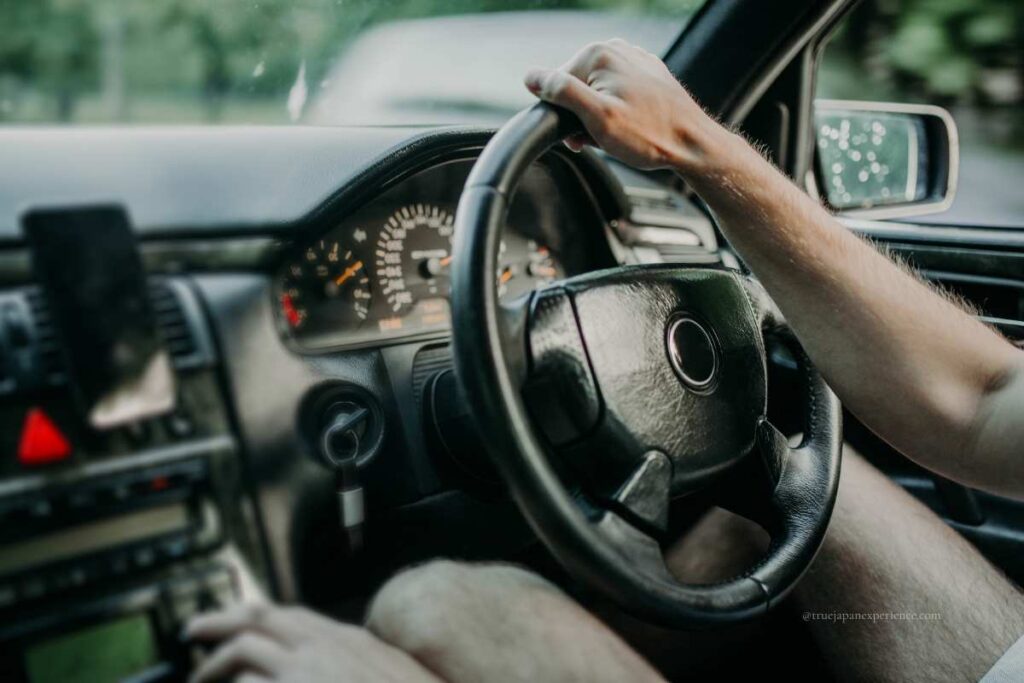
Not all countries have the same rules for getting a driver’s license.
In some places, it is very easy. People can get a license with just a short lesson or a simple test. This means some drivers have little practice and may not fully understand traffic rules.
But in Japan, it’s very different.
To get a license, people must take over 30 hours of classes and driving lessons, and pass three exams. Also, it costs a lot—usually more than 300,000 yen (around USD 2,000). This system helps make sure drivers in Japan learn safely and take driving seriously.
However, foreign tourists can rent a car in Japan with just an International Driving Permit (IDP) or a license with a Japanese translation. There is no driving test or skill check when renting a car.
As explained in the previous sections, Japan’s traffic rules, road signs, and road conditions are very different from those in many other countries.
Because of this, some tourists with little driving experience or limited knowledge of traffic rules drive in Japan without enough preparation. This often leads to dangerous situations—and sometimes serious accidents.
However, foreign tourists can still rent a car in Japan easily. If they have an International Driving Permit (IDP), or a license with an official Japanese translation, they are allowed to drive.
No driving test or skill check is required.
That’s why understanding the risks before getting behind the wheel in Japan is so important.
Common Accidents Caused by Tourists Renting a Car in Japan

Foreign tourists often cause accidents in Japan because they are not used to local roads, signs, or driving rules. Here are some of the most common types of accidents:
1. Hitting curbs or falling off the edge in parking lots
Japan has many narrow parking spaces. Tourists often hit curbs or fall off the edge of the road when trying to park or back up. This happens because they are not used to the small spaces or steering from the right side.
2. Crashing at intersections after missing stop signs
Many accidents happen when tourists do not see or understand Japanese stop signs. They enter an intersection without stopping and hit another car. Confusion about turning rules and signs also causes crashes.
3. Driving the wrong way or entering roads by mistake
Some tourists drive on the wrong side of the road or enter roads where cars are not allowed. This happens when they forget about Japan’s left-side driving or misunderstand the signs.
4. Scraping other cars on narrow roads or corners
Japan has many small roads, especially in neighborhoods and tourist areas. Tourists often hit cars, walls, or poles because they are not used to tight turns or judging space on narrow streets.
5. Slipping or losing control on snowy or mountain roads
In winter, many tourists drive on snow for the first time. In places like Hokkaido or Nagano, they often lose control of the car on icy hills or sharp turns.
6. Hitting bicycles or pedestrians
In Japan, drivers must always give space to people on foot or on bikes. But in some countries, cars are given priority. This difference causes accidents when tourists do not slow down or stop in time.
These accidents are not rare. They happen more and more each year.
The main reasons are: differences in traffic rules, unfamiliar signs, narrow roads, and lack of experience with left-side driving.
Because of this, police and rental car companies in Japan are working harder to prevent accidents caused by tourists.
What Tourists Need to Know About Car Rental Insurance in Japan
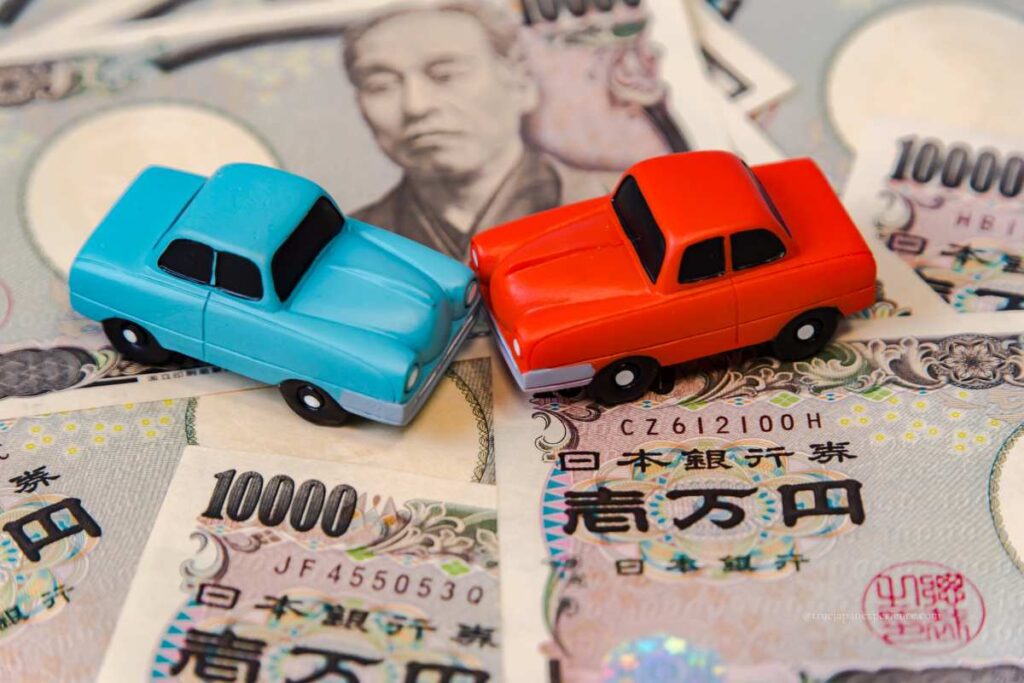
When you rent a car in Japan, basic insurance is usually included in the price. This covers injury to other people, damage to other cars or property, and some damage to the rental car.
However, you may still have to pay part of the cost yourself. This is called a deductible, and it can be expensive.
To avoid this, many rental companies offer optional plans like CDW (Collision Damage Waiver), which reduces or removes the amount you must pay.
What to Do If You Have an Accident in Japan
If you rent a car in Japan, it’s important to know what to do in case of an accident. These steps are usually explained by the rental car staff—so make sure to listen carefully before you drive.
・Make sure everyone is safe. Call an ambulance (119) if needed.
・Always call the police (110), even for small accidents. Without a police report, the insurance may not cover the damage.
・Call the rental car company right away and follow their instructions.
・If another car is involved, exchange contact and insurance details. Take photos and notes of the accident scene to help with later claims.
These steps are very important。If you skip them, you may have to pay for everything yourself.
Common Problems to Watch Out For
When renting a car in Japan, insurance may not cover every type of accident—even if you’re fully insured.
For example, be careful—insurance may not cover the following situations when renting a car in Japan.
・Failing to call the police can result in your insurance not covering the damage.
・Accidents caused by drivers not listed on the rental contract are not covered.
・Driving under the influence or breaking major traffic laws makes your insurance invalid.
・Language barriers often lead to mistakes with paperwork or communication.
・Leaving Japan soon after an accident may delay or prevent proper compensation procedures.
These issues are more common than you might think. That’s why it’s so important to follow the correct steps and understand your insurance coverage before you start driving in Japan.
Better Than Renting a Car in Japan: Use Public Transportation
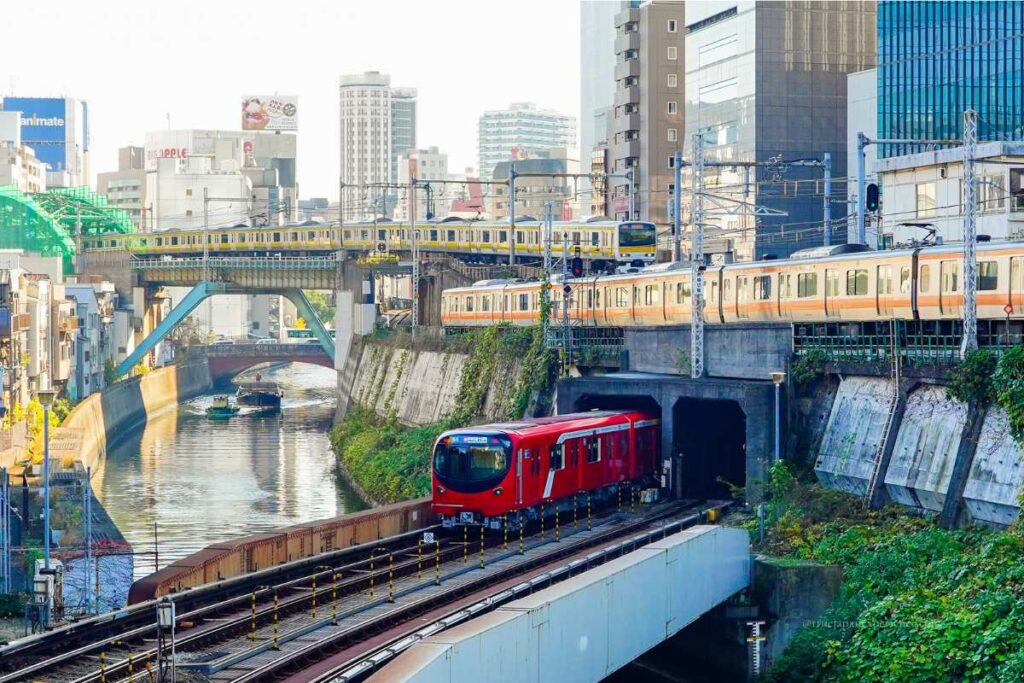
Renting a car in Japan comes with risks—taking public transportation is generally much safer.
Accidents involving public transportation are very rare compared to car accidents. If you are not used to Japan’s roads, rules, or signs, it is easy to make mistakes. But with trains and buses, you don’t need to worry about directions, traffic signs, or narrow streets.
Train travel also lets you relax and enjoy the view. You can sit back, rest, and even take a nap during your trip.
Public transportation helps reduce the number of cars on the road. That means less traffic and fewer parking problems. You don’t have to worry about getting stuck in a traffic jam or finding a parking space.
You will also walk more when using trains or buses. This is good for your health and helps you stay active during your trip.
However, in rural areas or small towns, trains and buses may not be available. Some areas only have a few buses per day, or no public transport at all.
In those places, it may be hard to visit shrines, temples, or nature spots without a car. If you want to explore the countryside but don’t want to drive, there are other good options:
・Join a local or major travel company’s bus tour.
Many tours leave from big train stations and visit rural attractions in one day.
・Use a taxi with a half-day or full-day private plan.
You can choose where to go and enjoy a flexible, private trip.
・Some hotels and activity centers offer free shuttle buses from the nearest train station.
Check in advance and make a reservation if needed.
In short, Japan’s public transportation is safe, easy to use, and often the best choice for visitors. Even in rural areas, there are good alternatives to driving yourself.
Choosing public transportation over renting a car?
Then you might find this helpful—especially if you’re traveling without an IC card:
No IC Card? No Problem! Smart Ways to Ride Trains in Japan
Final Advice: Don’t Drive in Japan Unless You’re Fully Prepared
Renting a car in Japan may seem like a good idea, but the risks—accidents, stress, legal problems—are real.
Unless you’ve studied the traffic rules, practiced left-side driving, and understand the signs, you should avoid renting a car in Japan as a tourist.
Instead, choose Japan’s world-class public transportation.
You’ll travel safer, smarter, and with much less stress.
